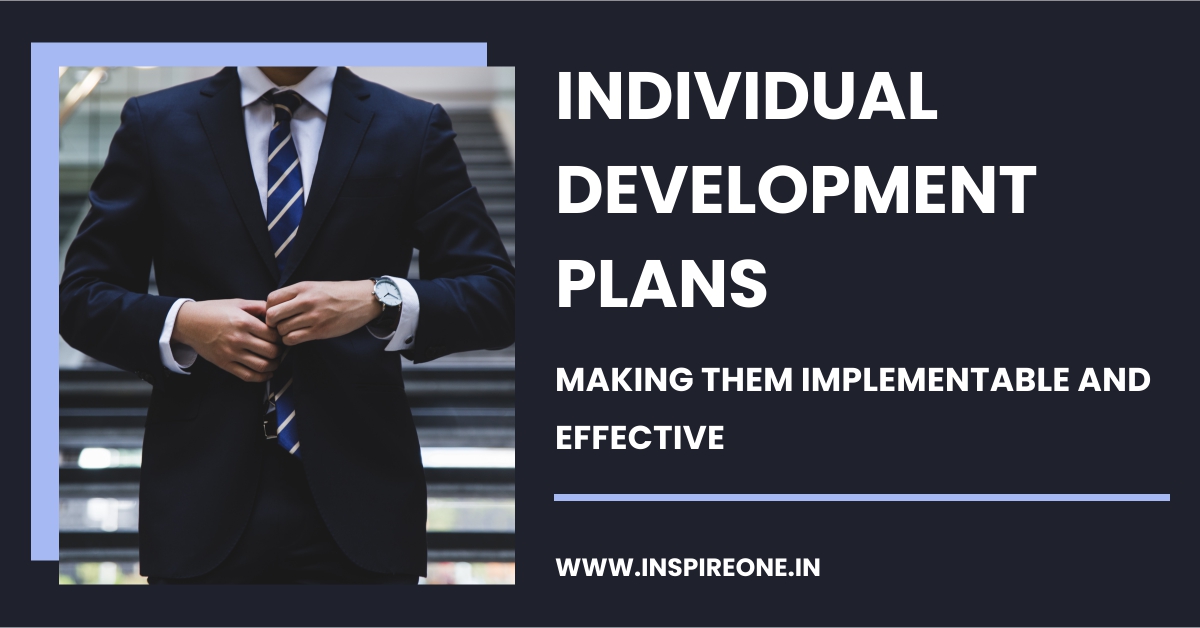As the adage goes: “Some leaders are born. Many are made.” It is incumbent therefore on the Leadership development professionals to take on the onerous responsibility of “making” or help develop leaders.
There is no rocket science to the leadership development process:
- Assessing the talent to identify development goals
- Crafting out the development plan
- Implementing the plans to develop the talent and high potentials for future roles
In our last blog we spoke about the key elements of a successful IDP. This blog will focus on answering the following questions, to enable successful implementation.
- What are the enabling factors of successful individual development plans (IDP)?
- What is a good mix of education, experience and exposure methodologies?
- How to mitigate the risks of a successful IDP creation?
Having set the goals, the next step is to create a development plan to achieve the goals. And clearly the success of an individual development plan rests on achievement of the development goals. A successful IDP can be found at the intersection of three key elements: organizational needs – what does the company need, passion – what do I love and competence – What am I great at.
The enabling factors of successful individual development plans
First, commitment of the 3 key stakeholders:
- The Increased belief that the organization is committed to the individuals’ development
- Increased commitment from the supervisors and HR
- Ownership and commitment from the employees towards their development and towards organizational goals
Second, developing a customized approach. The 70: 20: 10 approach may be implemented differently for different people. The development needs at every level and for every individual differ. At the senior level a more individually curated development approach is applicable. At the junior level, the development needs to cater to scalable and consistent skill development. An individual’s preferred way of learning can also impact the 70:20:10 ratio.
What is a good mix of education, experience and exposure methodologies
A development plan is created to provide the best learning options to its users? The key aim is to develop competencies to achieve the organizational strategy. Themes of development need to be, therefore, aligned to the organization strategy and the role imperatives. Competencies need to be defined to the level of applicable behaviors and proficiency levels. Strengths which may become de-railers should be identified. Finally, as a thumb rule, the development plan should focus on two development competencies and one strength competency.
Third, technology and AI led tools to manage scalability and monitoring of certain elements of the development options can be a significant an enabler of IDP success. Monitoring action learning projects and real-time guidance by supervisors are critical factors towards ensuring learning happened in the right direction.
How to mitigate the risks of IDPs coming to life?
The clear risk in for successful development initiatives is a failure in its implementation of IDPs. And therefore, to ensure success we must first identify what could possibly lead to its failure.
Understanding of “learning as a preference” for individuals is an imperative, specially for critical roles, and senior level roles. If learning is not a natural preference, additional support may need to be provided to those individuals. The imperative of owning development plans may need to be clearly spelled out with consequences.
Also keeping the people motivated towards achievement of the IDP, by means of rewards and recognition and a certification process, at the completion of each milestone of the development process can ensure continued ownership towards own development.
Having a robust governance process of IDP implementation with supervisory alignment and reviews at regular intervals can also mitigate risks to the IDP.
Creating a good IDP is a joint effort – of the organization, the supervisor, the HR and the employee. It is a continuous process of identifying capability gaps and formulating the right plan to achieve the development goals. So, as learning and development professionals it is our responsibility to facilitate the process by providing the right learning strategies.
Bibliography
Vo, K. (n.d.). Why You Need an Individual Development Plan (IDP) to Advance Your Career. Retrieved from IVY EXEC: https://www.ivyexec.com/career-advice/2018/why-you-need-individual-development-plan/







